#viridarium umbris
Explore tagged Tumblr posts
Note
so in the viridarium umbris there's a section called "the curse of the viridarius upon the false" is that a curse on book/pdf thieves?
I've always viewed it as a curse against those who might desecrate sacred/consecrated ground, but honestly, I don't have any real certainty. Does anyone else have their own thoughts?
30 notes
·
View notes
Note
hello! two years ago you mentioned 'hortus conclusus' in a post. if i may ask: what is that?
i didn't intend to answer this because i figured it'd be easily google-able, but then, on a whim--perhaps guided by the hand of the divine to not make a total ass of myself--looked it up, and it's really not clear what i was talking about.
the hortus conclusus i was talking about is from a book called Viridarium Umbris by Daniel Schulke. 'hortus conclusus' means 'secret garden' in latin, and in this case is/may be referential to the song of songs from the bible which mentions the phrase. its sort of hard to find individual things from the book online (outside of tumblr that is, lol) but the book is readily found in pdf form just about everywhere. it's on page 14 (page 33 of the pdf)
the idea is it allows spirits to impart wisdom onto the 'verderer' (as deemed by the book, lol. the amount of green is very silly)
sorry for taking forever to answer!
#lune croaks#frog answers#viridarium umbris#<- dis is also my VU tag which has a bunch of shit in it
4 notes
·
View notes
Text
I had a few thoughts to add -
Books that wake up, and how you know it: There's a couple obvious ones for me, I'll dream about the book, things in my life will start lining up like a giant neon sign pointing straight at said book, or the thought of the book will get stuck in my head like a song on repeat until I open it. Physical feelings are mostly relegated to my spine, my hands, and lately, my teeth with these books - and it feels like a back and forth, give and take; I work the book, the book works on me. (Heat and nausea are reserved for certain statues and icons - but that's a different story 😂)
My notebooks may carry a bit of my weight with them but I honestly don't know, I haven't written in a notebook or even opened one of my old ones in a long time now. I'll make maybe one entry in the book every other year now, I'm not sure what changed, I love writing everything but I just don't seem to have the patience for it anymore.
Bibliomancy - I keep my eyes closed so I can better hear the book. I make a prayer to a close saint before I begin the reading. My hands know when I've found the right page and then I run my fingertips over the page until I've found the right line (again, without looking). I specifically use Dante's Divine Comedy and The Rubaiyat of Omar Khayyam for this, I assume I'll branch out if I come across another book with the right feeling for it.
Price Point, Rarity, Staying Free - I have quite a few of these rare books, collected several years ago now. I've known people who printed out free copies and worked them more diligently and faithfully than those with the actual text, myself included. I didn't set out with a specific goal of collecting them, but I have a certain knack for things showing up at the exact right price when I'm looking for them. Currently, it is entirely a matter of how much money someone is willing to spend because the costs have increased dramatically in the last couple years and I fully support anyone who wants to print out their own copy or work from pdf files.
The Inner Librarian
To follow mypost about "Grimoires" :
Here is what catches my attention in your answers :
1-Books that are dormant and that awaken when the time is right. Which is somewhat similar to what @witchcraftingboop writes : books that have their own presence. Books that in one way or another make noise in themselves. Do you have any examples? Could you describe your feelings? (~ @friend-crow's nausea) 2-This kind of passion that we maintain with some books, the one we work with AND the one that works us. -> Are they the same ? 3-Not being able to afford this or that book, staying free. 4-Notebooks that act as oracles and also act as receptacles. So do you consider Marseille Tarot decks or other types of card oracles to be books? - For my part, I have a copy of the Mutus Liber which has always disturbed me a lot because it is "mute", which in a way "blinds" me (but I can't say how exactly or "what") and which I feel "white as milk". Of course it echoes to alchemy and hermeticism but that's not the point. The point is -> I've been avoiding reopening it since 5 years !
I have another book, which - in my experience - brings #diehard change. I always have an unpleasant feeling of cold wind (La "bise" we say in France) when I open it. The Fair Folks also seem to appreciate it a lot. It's a translation of the Egyptian Book of Gates. I really don't open it often :D
-
NOW : 3 questions for the witches book team :p 1/ Do you have haunted notebooks? How do you go about making your notebook magical ? What is a magical notebook according to you ? Has a "haunted" notebook ever taken you by surprise ? (you didn't expect it to be haunted for example.) 2/ To follow up on @witchcraftingboop super interesting post, how do you practice bibliomancy? (it doesn't have to be super complicated, nor spiritual, I'm just asking out of curiosity, I'm not making a judgment on what someone does or doesn't do ^^) Do you need a special book to practice bibliomancy? A book related to the occult, to spirituality, to religion? Or not necessarily ? And why ? 3/ Rarity VS industrial books. What can we say about the presence of one and the other? What do we put of ourselves in a book or a notebook that we want to awaken?
Yes I'm tagging you all again :D <3 @witchcraftingboop @friend-crow @windvexer @buddyblanc @gryphis-eyes @graveyarddirt @blackthornwren @la-dame-grise @gamayunsteward @lailoken @wildwood-faun @unseelie-witch @fur-teeth-bones-earth @reno-matagot @satsekhem @satsuti @aechlys @rainbluealoekitten @stormcrow513 and sorry if I forgot someone!
#especially cultus sabbati#I'm holding a grudge#azoetia#dragon book of essex#book of the black dragon#lux haeresis#ars philtron#viridarium umbris#I'm not counting tgm arcana viridia#crap book is crap#tuba veneris#think i covered all the main ones i have
27 notes
·
View notes
Note
You poked at Quareia at all or is that too new ?
Never heard of this. Skimmed the website. Seems like a pretty standard take on western initiatic stuff. Kinda low on swag imo but what do I know.
Like, every time I see something like this, I'm reminded of the first few pages of the Viridarium Umbris, or the Azoetia. Thats a damn grimoire right there. Its got swag, and the swag is essential.
99 notes
·
View notes
Text
The artwork of the Viridarium Umbris (The Pleasure Garden Of Shadow)
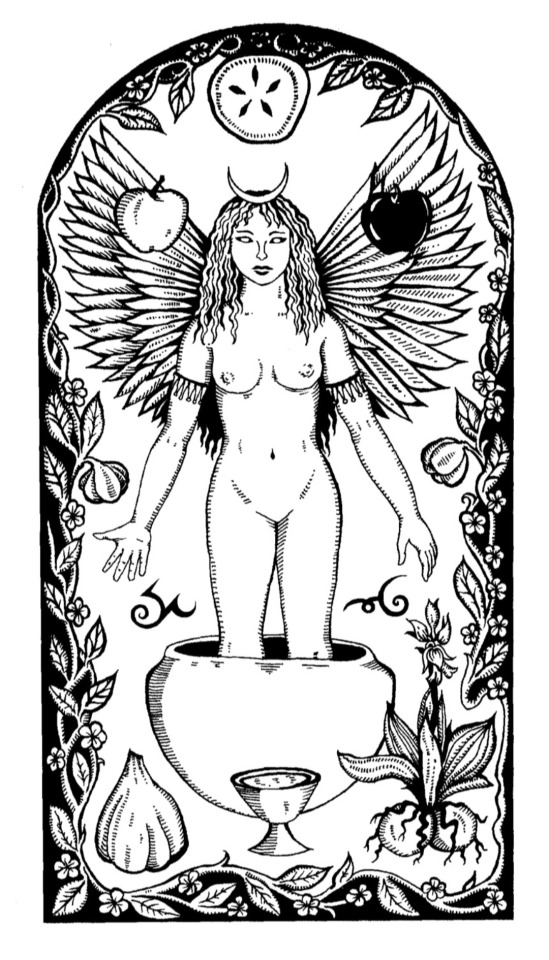
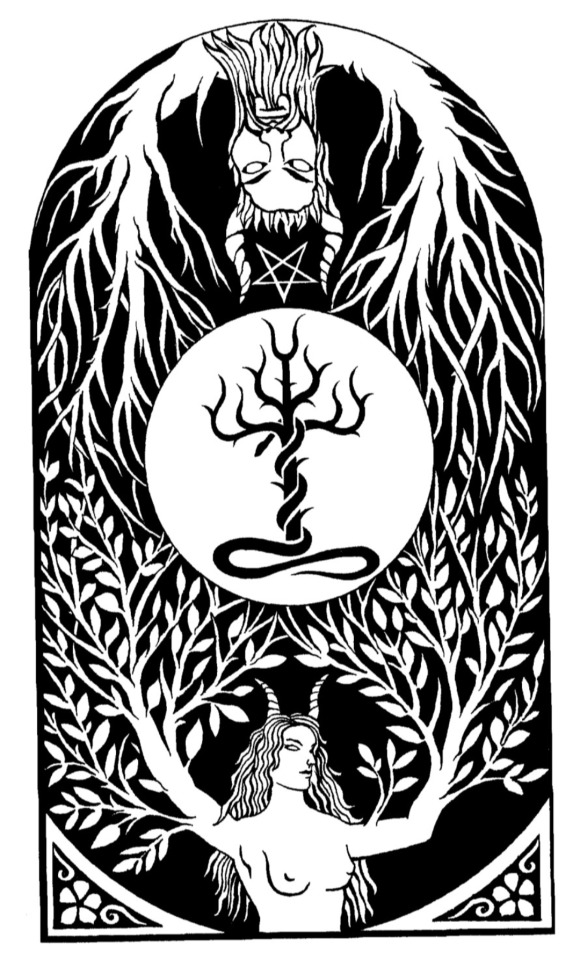
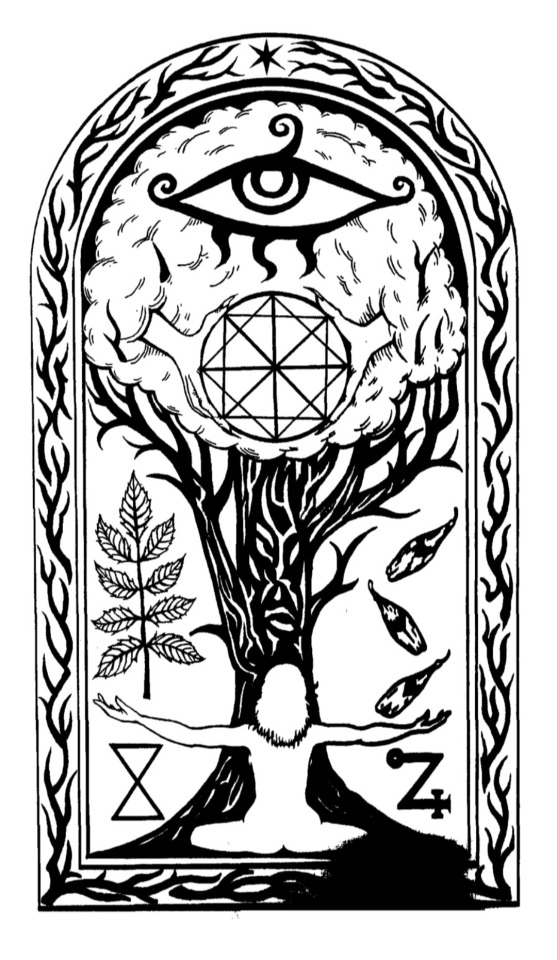

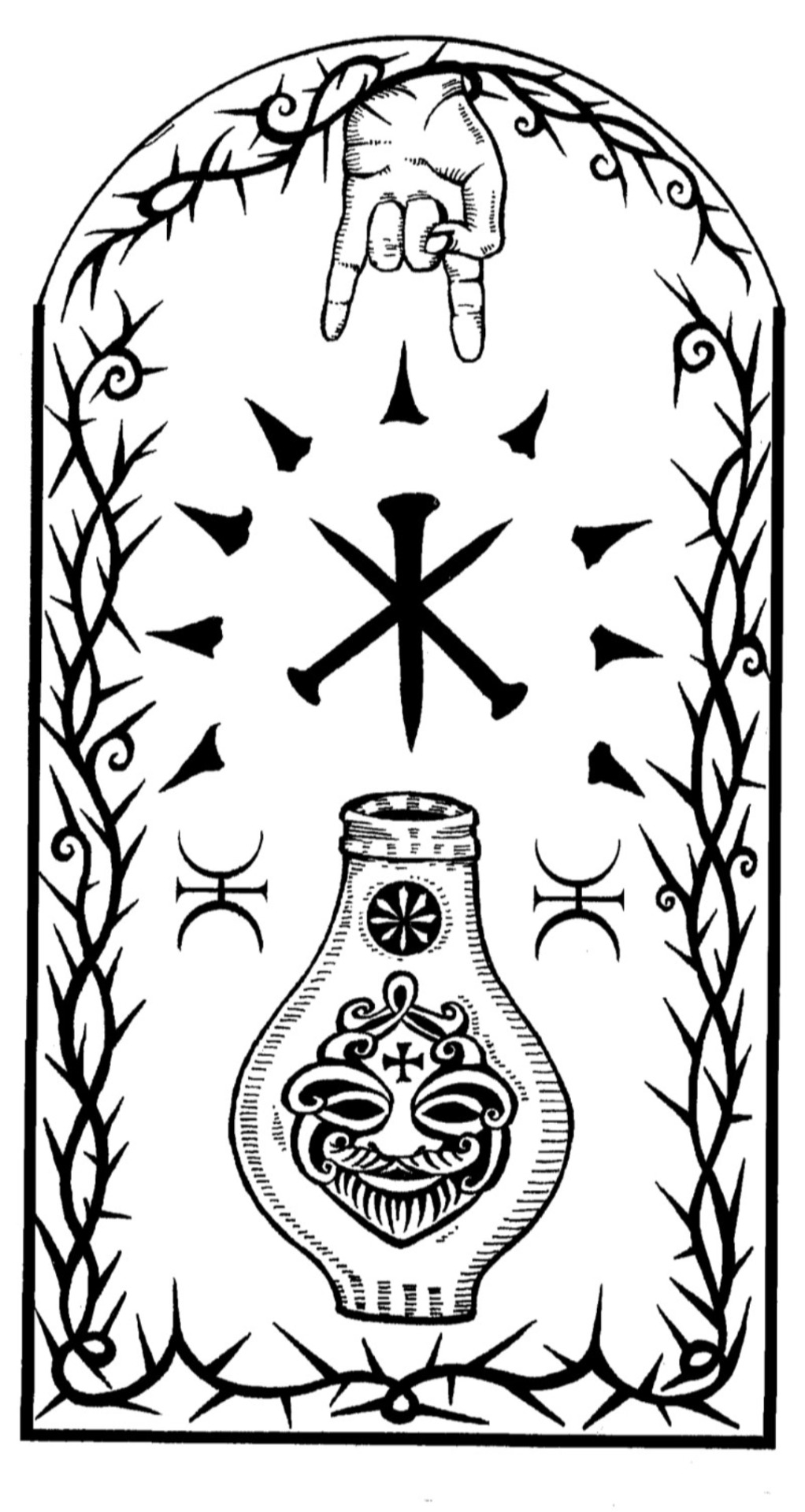


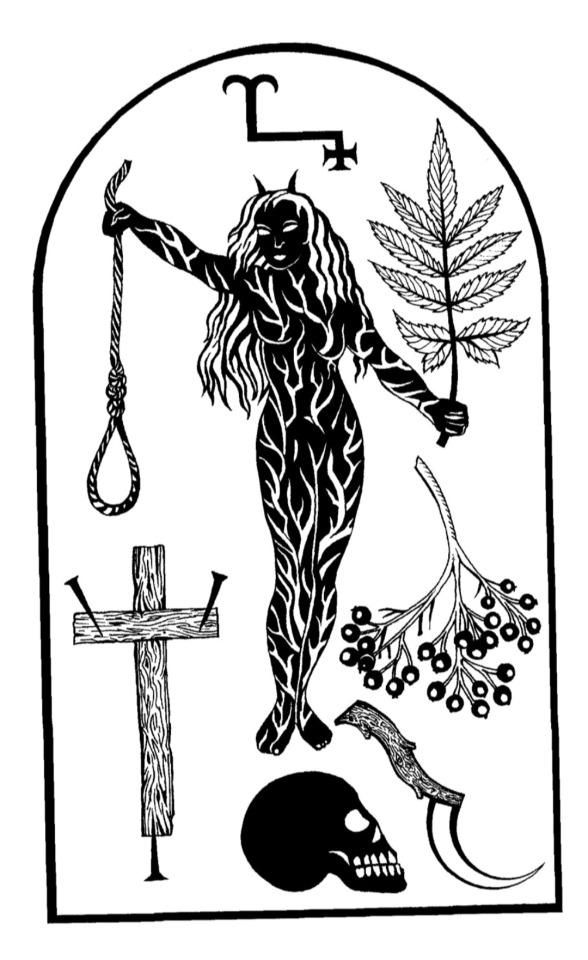

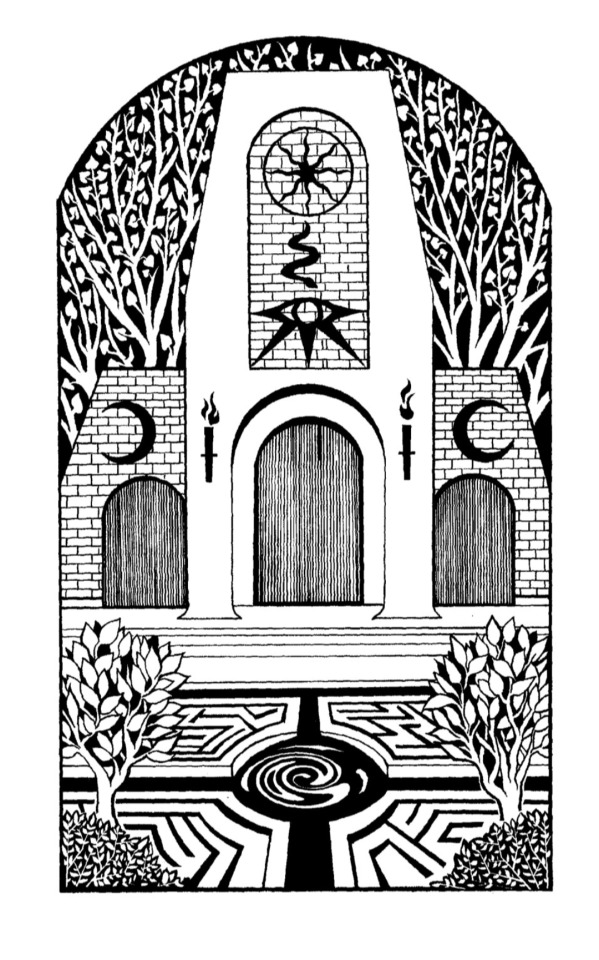
#witch#witchcraft#dark#magick#satanic witch#lefthandpath#satanism#grimoire#witchcraft books#occulltism#occultism#occult art#occult#esoteric#esoteric art#art magic#sigils#sigil#witchblr#witch community#eclectic witch#eclectic#pagan
114 notes
·
View notes
Text
Get out of the water, Raven commands. But she can't. Not when he slumps off his pegasus into the muck again. Or Forsyth continues to fight through obvious injury. Or Camilla...
Camilla needs her aid most. Raven might have been forced asleep but her staff had managed to close up most of his wounds. And Forsyth seems unaffected by the toxins in the air. Camilla is barely holding it together and Altena wills her steed over to the woman's side.
It is another weak glow of magic from her staff but she can see Camilla's breathing begin to steady. It is enough to stabilize her even if her skill with a staff is still lacking.
Altena 8/10 heals with Prayer Ring: 9/10 Altena 9/10 heals Camilla 2.5/10 with Recover [Roll: 5] [Total HP: 5] Camilla 7.5/10 Altena is afflicted with toxic poison. -1HP, 8/10HP
The air is thick and heavy. It leaves her feeling nauseous and a bit light headed but it's nothing she can't fight through. Especially when the ring on her finger glows warm and provides some relief.
@viridescent-lance @maligknightsthorns
Miss her, kiss her, love her, wrong move you're dead - Team 8 Iron Round
#toaarena2023summer#| thread | miss her kiss her#viridarium umbris#peerlessscowl#maligknightsthorns#hresvelged
19 notes
·
View notes
Note
I am slowly working on an occult library. One day, the Coward Discourses will sit beside the Viridarium Umbris, the Flowering Wand, the Black Dragon, and other books of modern esoterica. Then I will get to watch with barely contained glee as my confused guests peruse your wonderful work.
So, ummm, I suppose what I am saying I'd that if you ever make a fancy omnibus, I'd buy it in an instant.
I want to make an omnibus. Maybe not a fancy one. Or maybe so, idk. I also think if I was an occult library and found a book that was mostly pictures I would be so relieved.... 🪴

52 notes
·
View notes
Text
Decided to sin and re-read a handful of the books I got when I became interested in trad craft.
I forgot how uniquely detestable Robin asstart is
“Killing yourself would get you there (the otherworld)” why the fuck did he feel the need to say that? Who is out here thinking they’ll kill themselves in order to learn spirit flight
“I totally don’t recommend you cursing but say your daughter was raped could you be blamed for cursing the man to death” just…wtf man wtf…
“Fertile working of the womb seed” this speaks for itself
The more he talks about faery the more I’m convinced he’s got pebbles for a brain
Why say the devil is a part of witchcraft despite what “muH fluflky BunnY WicEnz” say but then go on to say it’s not actually the devil but a pagan god or faery
Why are we reducing the witch queen to love beauty and sex
Why are we boiling eggs and clay to make a poppet
The drawing of the hawthorn spirit in uhm resurrection of the meadow is most definitely a rip off of an illustration in viridarium umbris
Does he ever shut up
Why does it take three paragraphs of self aggrandizing pontification for him to get to the FUCKING POINT
50 notes
·
View notes
Note
disappointment anon, i didnt actually know you could create spirit doors i thought i just had to hope that the spirits heard me after i called them to me because i dont have clairsenses or good divination.. LOL but thank you for that post that was extremely helpful :)
Hi! In Traditional Witchcraft and other related practices, I think I especially want to say Fairy Faith, the idea that the practitioner has the ability to find, capitalize on, or simply create portals, gateways, and roads into the spirit world is a dominant theme.
The only time I ever see this referenced in 101 stuff is casting a circle! The concept in Traditional Witchcraft is more or less the same as a Wiccan circle, but we call it a compass. If a lot of your education is coming from online sources, you may be unaware that a primary function of a magic circle is to "join the worlds" and, as Kelden puts it,
On a deeper level, though, and most central to Traditional Witchcraft, the compass is a liminal place, a doorway through which we can enter into the Otherworld.
On one hand, the word compass is synonymous with the word circle, but it also denotes the well-known navigational tool used in travel. This second meaning makes a lot of sense in the context that Traditional Witches use the compass round to navigate and traverse the different realms.
Kelden, The Crooked Path, 2020 (emphasis my own)
For a spirit-working witch, the skill of learning where to find spirits and how to reliably call them is a skill which I believe is separate from brokering deals. I also believe that working with these gateways is probably a fundamental skill of witchcraft.
The witch has many tools at their disposal for creating gateways into the spirit world and walking back and forth between this world and the next, with new knowledge, allies, and powers.
Some of these gateways are physical locations, each of which may lead to a different place in the otherworld, or make it easier or more difficult to access certain powers.
A small, secluded cave half-filled with water at the bottom of a steep riverbank may be the ideal location to enter the Underworld, or commune with chthonic powers.
A tiny thicket formed by the arch of a rosemary bush where it tangles with the branches of a thorny rose may be an excellent location to leave tiny gifts for the Greenwood and commune with the green folk.
Much more accessible for many of us is indeed just the concept of crossroads, either a 4-way X or a 3-way T. These locations are long famed for being the meeting places of spirits, or ideal locations to leave offerings or broker spirit deals. The Devil Himself is often said to be haunting just such remote crossroads.
But these gateways don't just have to be found. The witch has the power to create them.
Exhibit A - casting a circle (or more accurately to say, laying a compass).
Also, I believe the creation of a spellcasting altar, if properly magicked and tended to, begins to become liminal in and of itself - it literally becomes a doorway to the otherworlds.
Certain human-made locations, like gas stations and grocery stores, are often considered to be gateways and have been used by some practitioners to fulfill spellwork.
Various charms and talismans can assist with creating doorways navigating the liminal, most famously the Holey or Hag stone.
Robin Artisson details several methods of understanding, discovering, creating, and working with such doorways, I believe in Witching Way of Hollow Hill, but especially in An Carow Gwyn, in the section called The Breaching Charms: The Gateways into Sorcerous Experience.
Daniel Schulke, at least in Viridarium Umbris, provides several sigils and charms for obtaining entrance into the otherworld.
Roger J Horne, in A Broom at Midnight, details thirteen "gateways" to spirit flight. While these are specifically methods of entering astral travel, any student of the concept of gateways and doors within witchcraft I think would benefit from studying the rituals within.
Speaking of astral travel, many common methods espoused include imagining that a person is climbing down the roots of a tree, or inside of the trunk of a tree and floating down like an elevator; or going down a well. All of these things are analogous to (or, the same thing as) mentally seeking out a gateway to the otherworld, searching in mental constructs of places in nature where gateways are commonly found or believed to be found.
Indeed, the concept of roads, gates, thresholds, and doors, is (I think) a vital contemplation to the understanding of Witchcraft itself, and it is upon these bedrocks that a great deal of witchcraft has been built.
115 notes
·
View notes
Text
00.01 table of contents
Grimoire Table of Contents

This is my personal Grimoire, so it will be focused just on the information that I need/use! If you’d like more info on anything that I haven’t included, please do more research!
00.00 introduction
00.01 table of contents (you are here)
00.02 book list
00.03 advice
01.00 correspondences
01.01 triquetra Druid elements
01.02 quarternary elements
01.03 crystals
01.04 herbs
01.05 waters
01.06 colors
01.07 metals
01.08 chakras
02.00 lunar magick
02.01 lunar ingredients
02.02 dark moon
02.03 new moon
02.04 black moon
02.05 waxing crescent
02.06 first quarter
02.07 waxing gibbous
02.08 full moon
02.09 blue moon
02.10 waning gibbous
02.11 last quarter
02.12 waning crescent
02.13 lunar eclipse “blood moon”
02.14 solar eclipse
02.15 moon void
03.00 tarot
03.01 numbers 1-10
03.02 court cards
03.03 suits
03.04 major arcana
03.05 yes/no/maybe
03.06 spreads
04.00 basic spells
04.01 warding/protection spell
04.02 cleansing spell
04.03 safe travels satchet
04.04 luck/prosperity tea
04.05 fire cider + chutney soup
See this post for all of my favorite recipes
05.00 favorite ingredients
05.01 quartz
05.02 amethyst
05.03 obsidian
05.04 citrine
05.05 sodalite
05.06 salt
05.07 rosemary
05.08 cinnamon
05.09 lavender
05.10 moon water
06.00 spirits + fae
06.01 signs of fae
06.02 attraction/offering + repelling fae
06.03 (some) types of fae
06.04 spirit guides
06.05 spirit signs/omens
06.06 working with spirits
07.00 calendar
07.01 yule / dec 21st
07.02 imbolc / feb 2nd
07.03 ostara / mar 21st
07.04 beltane / may 1st
07.05 litha / june 21st
07.06 lughnahsadh / aug 1st
07.07 mabon / sept 21st
07.08 samhain / nov 1st
07.09 history cycles
08.00 druidry
08.01 druidry overview
08.02 bard
08.03 ovate
08.04 druid
09.00 science and magick
09.01 quotes
09.02 matter and energy
09.03 placebo effect
09.04 energy and physics
09.05 more matter, energy, and theoretics
09.06 measuring energy
09.07 psychometry and "imprinting"
09.08 aether
09.09 green magick and plants
09.10 synchronicity
10.00 theism + beliefs
10.01 witchcraft practices
10.02 deist quotes
10.03 deism workings
11.00 margin notes [upg]
11.01 low budget options
11.02 how to practice around burnout
11.03 small ways to practice
11.04 notes
12.00 worldview [upg]
May or may not include this
12.01 personal beliefs
12.02 creation of the universe
12.03 death + otherworld
12.04 time
12.05 institutionalized religion
12.06 magick
12.07 aspects of world
12.08 spirits
13.00 library
13.01 Viridarium Umbris
30 notes
·
View notes
Note
What reading or background knowledge would you consider to be a pre-requisite for starting Viridarium Umbris?
I'm honestly not sure what I would suggest, other than maybe trying to learn what you can about Eruopean Wort Cunning and the Cultus Sabbati first. Others are welcome to give their own suggestions to this, though!
33 notes
·
View notes
Text
Found hardbacks of viridarium umbris and ars philtron. Farewell money
9 notes
·
View notes
Text
Okay, I took a year to get distracted by Azoetia, but now I'm super excited to start working Viridarium Umbris. I am taking the most organized notes of my life.
#it's also just remarkably easy to read after Chumbley#in part because I got a lot of useful background info from Chumbley
8 notes
·
View notes
Note
any tips on reading viridarium umbris? its like trying to digest a brick
If you don't get it, you need to do more background reading. Schulke intentionally writes to baffle the uninitiated. Brush up on your Agrippa, Dee, AMORC, Crowley, etc.
Also like, don't feel bad if it doesn't mesh. It's a pretty adept text. I know for a fact that I don't fully grasp it yet. Tbh it's a pretty useful litmus test for Occult knowledge.
226 notes
·
View notes
Text
Psalm Of The Enchanted Cup

Dew of the Fang, Dew of the Wood,
Dew of the First Rime spoken,
Go forth as Blood into Fruit,
That all things Made be Broken.
Now Light and Dark conjoin as One,
That Earth may claim its Soul;
Now Blood of Clay burn hot with Fire
That flesh divided be made whole.
Fire of Life into the Pot,
Fire of Death to warm it.
Fire of Angels light the Dew
With Devil's Fire to charm it.
Turn the Waters, turn the Blood
Three times round times Nine,
By Rood and Wyrm and Nectar Bann'd
Pour out the Graveyeard's Wine:
Waters Black to hide the Cup,
Waters White to see it.
Waters Red to chain the Flesh
And Waters Wise to free it.
O Waters charmed of Lilith's Womb,
O Cup of Man pour'd out in Love,
O Thou who turns the Cauldron Black,
Drink ye now the Stars Above.

-Viridarium Umbris
#witch#dark#magick#satanic witch#lefthandpath#witchcraft#satanism#demons#demonolatry#witchblr#witch community#spellcasting#spells#spell#evocation#Psalm#enchanted#Cup#Virudarium Umbris#grimoire#black magic#occult#occulltism#occultism#esoteric#poetry#eclectic#pagan#chaos witch#Chaos
62 notes
·
View notes
Text
Developing Local Cultus: A Companion Library
In preparation for the revamping of my Local Cultus series over on wordpress, I have begun to gather this small reference library for anyone who may be interested. Containing mostly works which inspired me to set out on the path of developing a localized religious practice, as well as some of my research materials. For those interested in the series, and the topic which it covers, I absolutely recommend giving these titles a flip through.
The first of this series, an introduction and mapping out of what is to come, will be up on the Barn Cultus website by the end of July.
Braiding Sweetgrass by Robin Wall Kimmerer Indispensable knowledge of ecological relationships as written by an indigenous woman and professor of environmental biology.
The Green Mysteries by Daniel Schulke An encyclopedia of the spiritual, magical, and folkloric qualities of plants. Written by the Magister of the Sabbatic tradition.
The Golden Bough by James George Frazer Frazer tracks the role of religion and magic up until the modern day, introducing along the way some of the key ideas behind my style of cultus developing (such as re-enchantment). This book is always on my reference shelf, close at hand, and while the anthropology is at times laughably outdated, it is a beautiful read with some interesting groundwork.
Viridarium Umbris by Daniel Schulke I'd be remiss to not include this in my list. Another Schulke work and a comprehensive grimoire of verdant magics. I personally view this book as overhyped, though a should-read, perhaps not a must.
Demons & Spirits of the Land: Ancestral Lore and Practices A foundational text of folkloric land spirits and the operations used by Pre-Modern Europe to interact with them.
Roman Cult Images: The Lives and Worship of Idols from the Iron Age to Late Antiquity In my own eyes, the finding of localized images. Images references the faces, attributes, and fauna of the region in which each divinity of the cultus is depicted. The crafting of cult images, in the forms of eikons and idols, is another aspect of this.
Idolatry Restor'd by Daniel Schulke Schulke speaks to the ensouled fetish, which connects greatly to the idea of the Living Statue and the cultic image. More of a sorcerous read, but worth it nontheless.
We Are In The Middle of Forever: Indigenous Voices of Turtle Island on the Changing Earth I hold the strong conviction that those of us in America who find our bloodlines here through the powers of colonialism absolutely must be listening to indigenous wisdom- full stop. Publications like this one are a huge boon to the mending of the rift between the descendants of colonialism and the land which they inhabit. I think this becomes doubly important to those practices land-based religions.
The Sacred and the Profane by Mircea Eliade I come with the bias of studying the anthropology of religion full time. This book has in many ways aided in bridging the gap between my academic studies and the building of my theologies, and is a profound read by an author with a storied collection of publications within the field.
Mystai: Dancing out the Mysteries of Dionysus An interesting look into the mystery cult of Dionysus during late antiquity. Mystery cults often operated regionally and with localized aspects to their mysteries.
Eleusinian Mysteries and Rites by Dudley Wright All literature on the Eleusinian mysteries is a boon- this is my recommendation. Following the ritual life of the local agriculture cult which has gone down in history as one of the largest surviving cults into the Christianization of Greece.
Walking the Worlds: Building Regional Cultus Less of an academic read than the others on this list, but one I found equally as inspiring. The articles speak to diaspora and tensions of modern polytheism, and I think without some kind of academic pre-knowledge of these topics the articles themselves would fall a little flat, but a worthy read for the genuine pursuant.
Mystery Cults in the Greek and Roman World by the MET
Kongo in Haiti: A New Approach to Religious Syncretism by Luc de Heusch This article explores religious syncretism through the lens of Vodou, an African traditional religion known for its syncretic relationship with Christianity here in the US and Haiti. De Heusch explores a little bit of the roots in West Africa, and how the religion operates in both syncretic and nonsyncretic ways across the African diaspora.
Why Cecropian Minerva?: Hellenic Syncretism as System by Luther H. Martin This article explores syncretism in a western context, from the other side of the isle. This is not syncretism brought on by oppression and colonialism, instead highlighting syncretism theologically proposed by the oppressors, a favorite of the Romans. Martin explores the theology of this, the politics of this, and offers interesting analysis of the historical evidence.
Epithets in the Orphic Hymns by W. K. C. Guthrie There's powers in names. You know it, I know it, Guthrie certainly knows it. Behind that power is meaning. While Guthrie does not particularly touch on regionalized epithets, I still find this to a be a great read to get one thinking about cult specific poetic titles.
119 notes
·
View notes